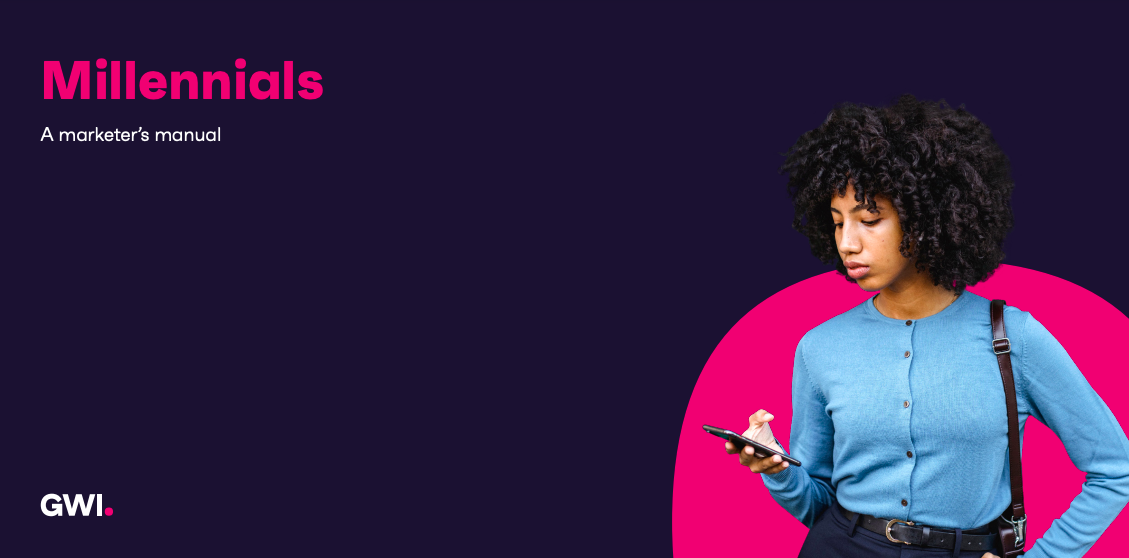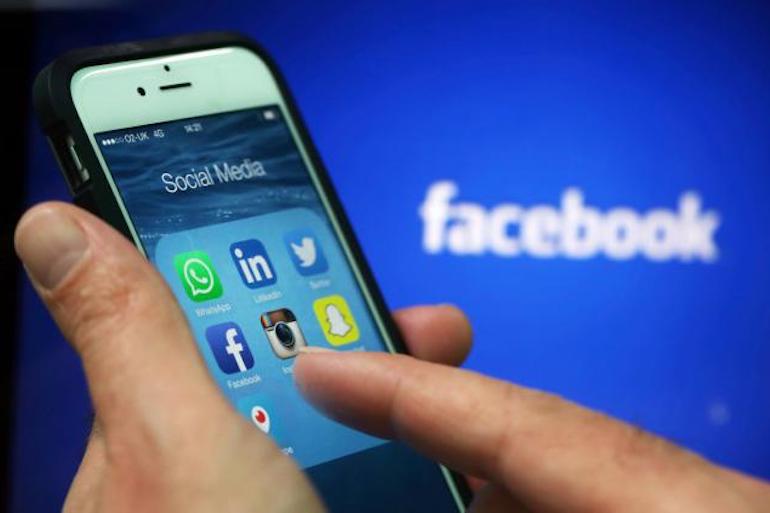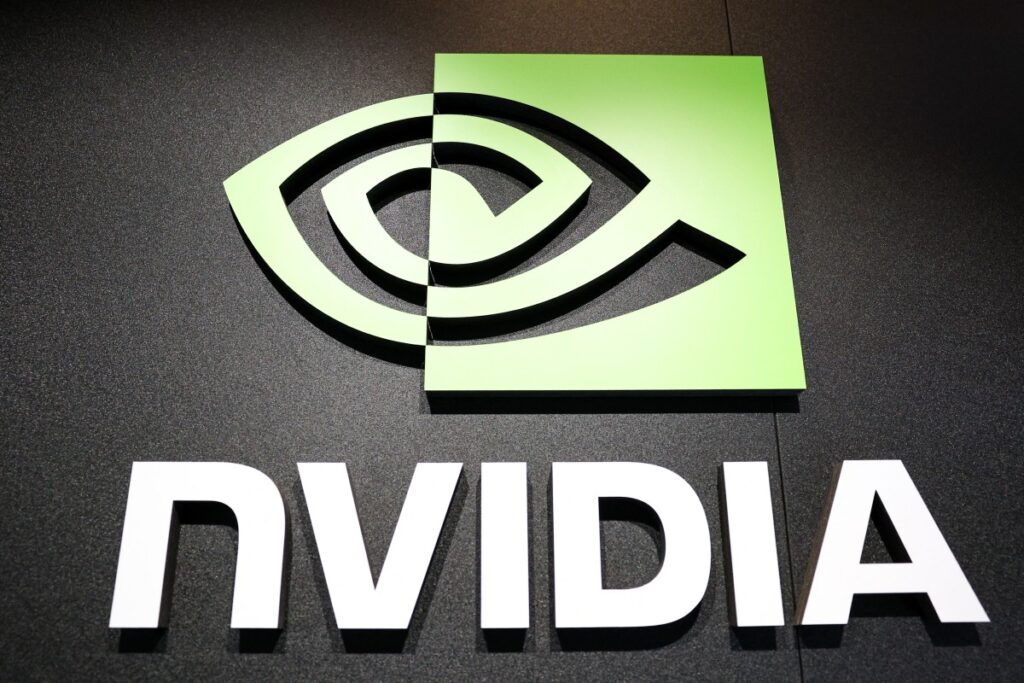Each year, GWI interviews over 700,000 internet users aged 16-64 via an online questionnaire for their core dataset. A proportion of respondents complete a shorter version of this survey via mobile, hence the sample sizes presented in the charts throughout this report may differ as some will include all respondents and others will include only respondents who completed GWI’s Core survey via PC/ laptop/tablet.
Millennials are maturing
While the oldest millennials are approaching middle age, their younger counterparts are stepping into more senior workplace roles. That means greater financial independence, opening the door to products they couldn’t previously afford.
Defined by the economic struggles of the late 2000s, millennials have a distinct attitude to money and finance. There are some similarities to Gen Zs here, but while these younger consumers are more money-driven, millennials are more money-aware; they’re more likely to say they’re good at managing money or describe themselves as price-conscious.

Their tendency to go ‘all-in’ could also explain why they’re keen investors, especially when it comes to riskier assets like cryptocurrency. Since 2019, the number of millennials who own this kind of investment has grown 65%.
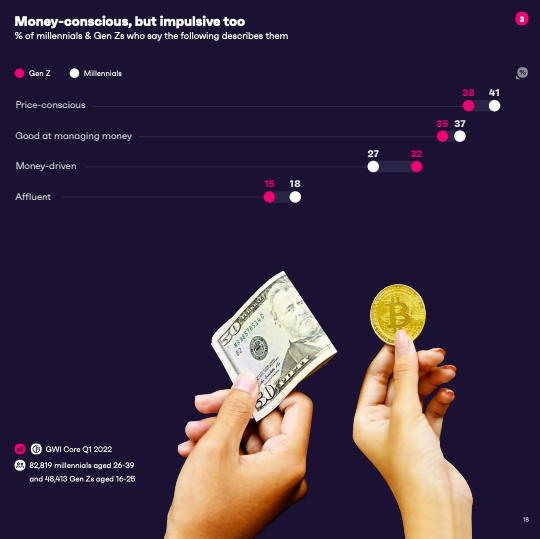
They’re big on image
Millennials are an active and health-conscious generation. Over two-thirds exercise regularly, 17% don’t drink alcohol, and the number who eat fast food is falling steadily. Not all this work is for health reasons alone; 42% of millennials say they take care of their appearance, and 1 in 3 say it’s important to be accepted by others.
Millennials are health-conscious but image-conscious too. While there are legitimate opportunities for exercise and health-related brands to reach this generation, they need to consider how image-consciousness ties into mental health. Fashion brands, in particular, should think carefully about how they represent different body shapes in their marketing to help millennials from over-comparing themselves to others.

Online time is falling
Covid brought about a significant change in media habits across the world, and between 2019 and Q2 2020, millennials followed a similar pattern to other generations; time on things like the online press, music streaming, games consoles, and online TV increased dramatically. As of Q1 2022, however, many of their old media patterns have returned. They’re almost on par with 2019 figures for using games consoles, reading press (of any kind), and listening to the radio, while spending less time on social media.
While millennials are gradually spending more time using online media, their overall time online is lower than it was pre-Covid. There are several possible reasons for this: digital detoxing, nostalgia about older forms of media, or simply a changing lifestyle. Millennials are starting families and moving into senior roles, so their time is more precious than ever.
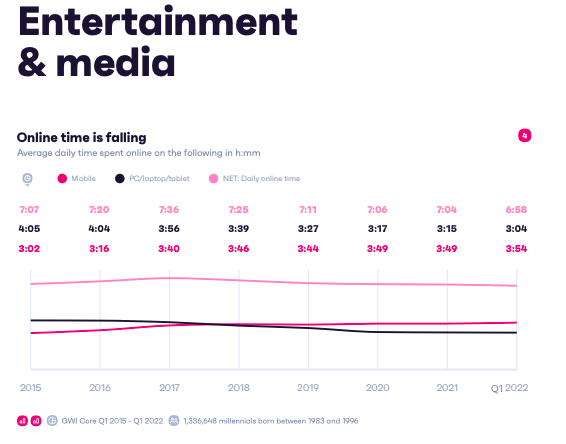
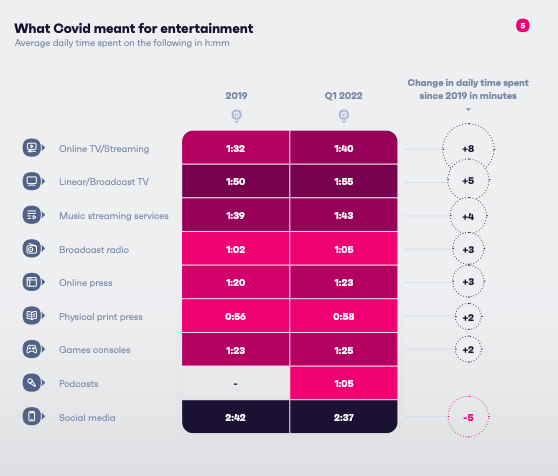
They will be early adopters of the metaverse
Despite spending less time online, and signs of increasing awareness regarding their relationship with tech, millennials are 20% more likely than the average to say they prefer their time spent online than in the real world. And as early pioneers of the internet, heavy gamers, and key users of things like music & TV streaming, who can blame them?
Among millennials, interest is high (40% say they are). While this is behind Gen Zs (47%), it’s easy to imagine them among the first adopters when the first ‘true’ metaverses arrive. There’s some fairly subtle reasons for this, besides interest. Many play online games, over half of the full-time workers now work remotely, and nearly 1 in 5 take online fitness classes every week. They had to adapt quickly to online environments in the pandemic, so a switch to the virtual world could come naturally to them.
Millennials are among the most interested in the metaverse, just behind Gen Z. For it to truly captivate them, however, it will need to offer various activities beyond just new ways to shop – encompassing different media and hobbies they already enjoy in the real world.
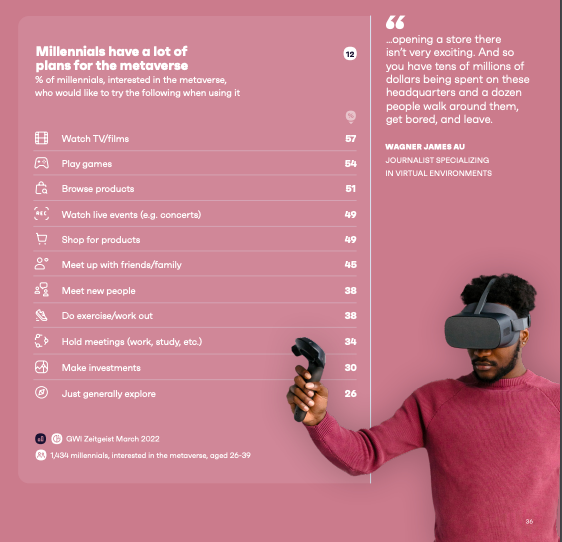
Social media is central to their purchase journey
Social media is central to the millennial purchase journey – in some ways, more so than Gen Z. Brands already need a robust social media presence, but by implementing ways for them to discover and purchase products without ever opening a new window, they’re more likely to nurture returning customers.
There’s a different vibe for every platform that brands need to nail down, and the varying reasons millen – nials have for using social offers new means of engaging with them in ways they might not expect. There are clear favorites when it comes to accomplishing certain tasks on dif – ferent platforms. Finding funny content, for example, is now TikTok-first, while Facebook keeps millennials updated and gives them a place to message friends/family.


